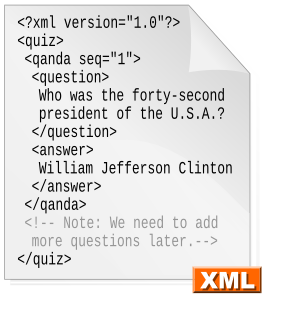This article is being considered for deletion in accordance with Wikipedia's deletion policy. Please share your thoughts on the matter at this article's entry on the Articles for deletion page. |
The OpenDocument Foundation, Inc. (not to be confused with The Document Foundation) was an organization set up in 2002 by Gary Edwards, Sam Hiser, and Paul "Buck" Martin (real name Paul E. Merrell) to promote the use of open standards-based XML/RDF document formats for desktop computer use. Many members of the foundation were involved in the development of OpenDocument, first in the OASIS Office XML Format TC (Technical Committee) and later in the OASIS Open Document Format TC with up to four members of the TC representing the OpenDocument foundation in the TC. [1]
The Document Foundation (TDF) is a non-profit organization that promotes open-source document handling software. It was created by members of the OpenOffice.org community to manage and develop LibreOffice, a free and open-source office suite, and is legally registered in Germany as a Stiftung. Its goal is to produce a vendor-independent office suite with ODF support in a development environment free from company control.
An open standard is a standard that is publicly available and has various rights to use associated with it, and may also have various properties of how it was designed. There is no single definition and interpretations vary with usage.

Extensible Markup Language (XML) is a markup language that defines a set of rules for encoding documents in a format that is both human-readable and machine-readable. The World Wide Web Consortium's XML 1.0 Specification of 1998 and several other related specifications—all of them free open standards—define XML.
Contents
In October 2007, the OpenDocument Foundation controversially switched its support from OpenDocument to the World Wide Web Consortium (W3C)'s Compound Document Format (CDF). [2] The case was unfortunate since the name of the Foundation suggested for the uninvolved reader that they were deeply connected to the format, or originated it, and the change meant an important supporter to get dissatisfied with the results; while in reality it only meant that the remaining few persons behind the Foundation had changed their minds. [3]
The Open Document Format for Office Applications (ODF), also known as OpenDocument, is a ZIP-compressed XML-based file format for spreadsheets, charts, presentations and word processing documents. It was developed with the aim of providing an open, XML-based file format specification for office applications.
The World Wide Web Consortium (W3C) is the main international standards organization for the World Wide Web. Founded and currently led by Tim Berners-Lee, the consortium is made up of member organizations which maintain full-time staff for the purpose of working together in the development of standards for the World Wide Web. As of 29 May 2019, the World Wide Web Consortium (W3C) has 444 members. The W3C also engages in education and outreach, develops software and serves as an open forum for discussion about the Web.
Compound Document Format (CDF) is a set of W3C candidate standards describing electronic compound document file formats that contains multiple formats, such as SVG, XHTML, SMIL and XForms. The core standards are the Web Integration Compound Document and the Compound Document by Reference Framework (CDR). As of August 19, 2010, the Compound Document Format working group has been closed, and W3C's development of the standard discontinued.
However, Chris Lilley of the W3C later explained to Andy Updegrove that CDF is not intended as an office format and is not a suitable replacement for the OpenDocument format. None of the three remaining members of the foundation are members of the W3C or the CDF working group. Andy Updegrove theorised that the foundation had "decided to turn out the lights" and were simply attacking those that had rejected their proposals to the OASIS TC. [4]
As of November 11, 2007, the official website has been shut down, probably marking the end of the OpenDocument Foundation.